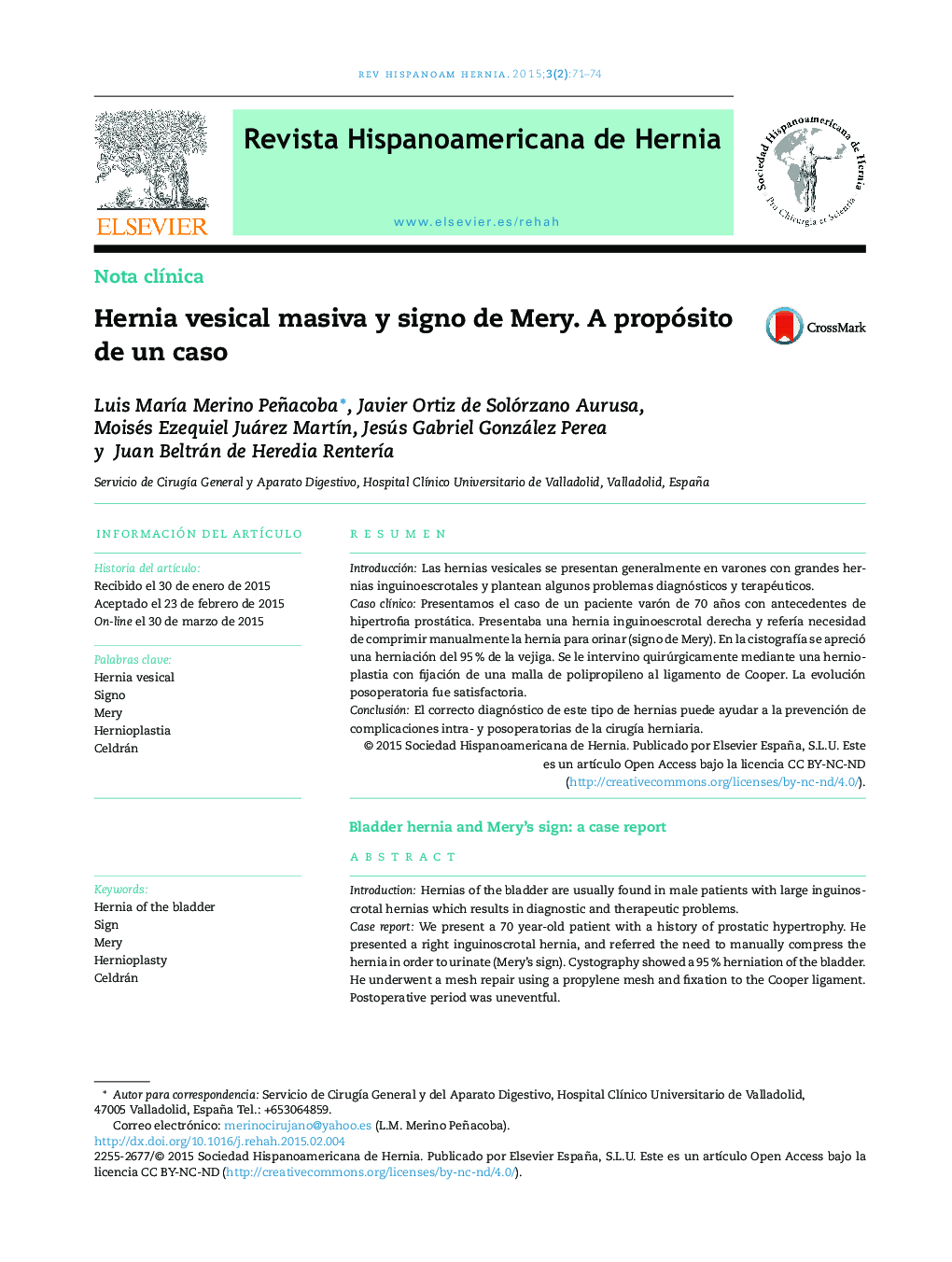| Article ID | Journal | Published Year | Pages | File Type |
|---|---|---|---|---|
| 4306091 | Revista Hispanoamericana de Hernia | 2015 | 4 Pages |
ResumenIntroducciónLas hernias vesicales se presentan generalmente en varones con grandes hernias inguinoescrotales y plantean algunos problemas diagnósticos y terapéuticos.Caso clínicoPresentamos el caso de un paciente varón de 70 años con antecedentes de hipertrofia prostática. Presentaba una hernia inguinoescrotal derecha y refería necesidad de comprimir manualmente la hernia para orinar (signo de Mery). En la cistografía se apreció una herniación del 95 % de la vejiga. Se le intervino quirúrgicamente mediante una hernioplastia con fijación de una malla de polipropileno al ligamento de Cooper. La evolución posoperatoria fue satisfactoria.ConclusiónEl correcto diagnóstico de este tipo de hernias puede ayudar a la prevención de complicaciones intra- y posoperatorias de la cirugía herniaria.
IntroductionHernias of the bladder are usually found in male patients with large inguinoscrotal hernias which results in diagnostic and therapeutic problems.Case reportWe present a 70 year-old patient with a history of prostatic hypertrophy. He presented a right inguinoscrotal hernia, and referred the need to manually compress the hernia in order to urinate (Mery's sign). Cystography showed a 95 % herniation of the bladder. He underwent a mesh repair using a propylene mesh and fixation to the Cooper ligament. Postoperative period was uneventful.ConclusionThe correct diagnosis of these type of hernias may help prevent complications in and after surgery.
